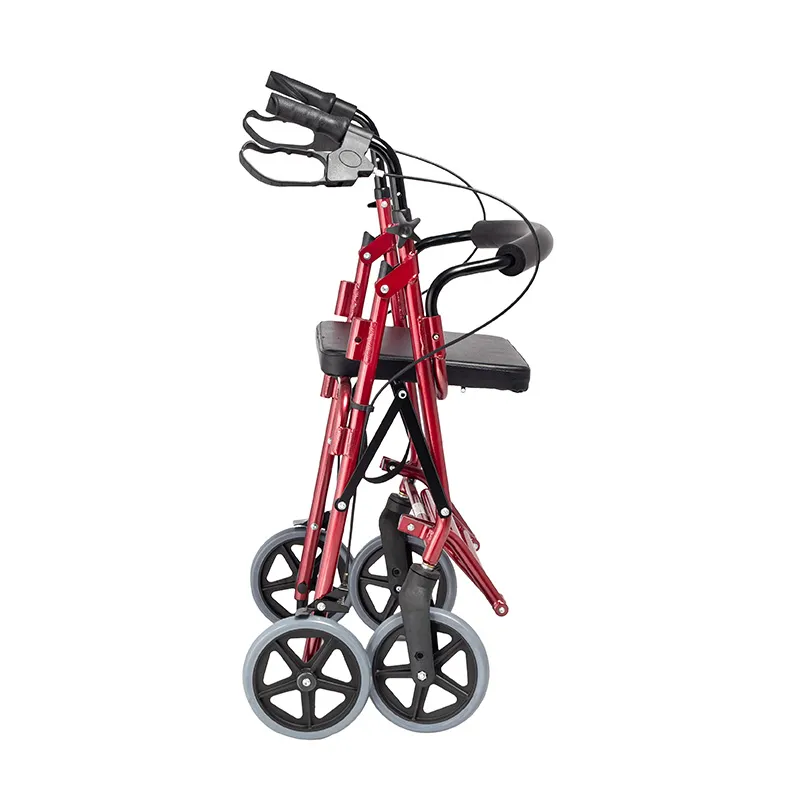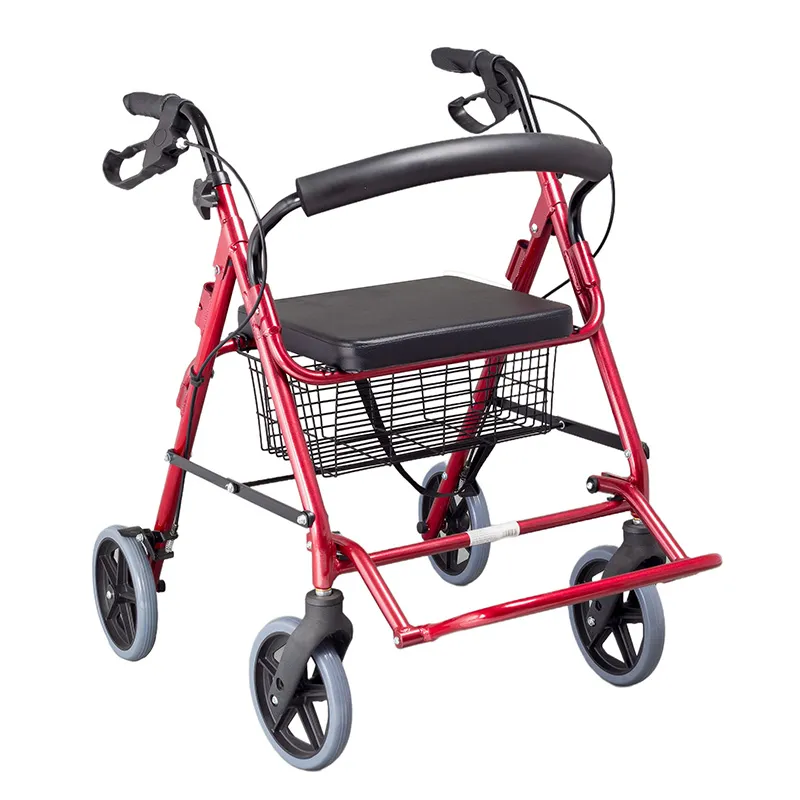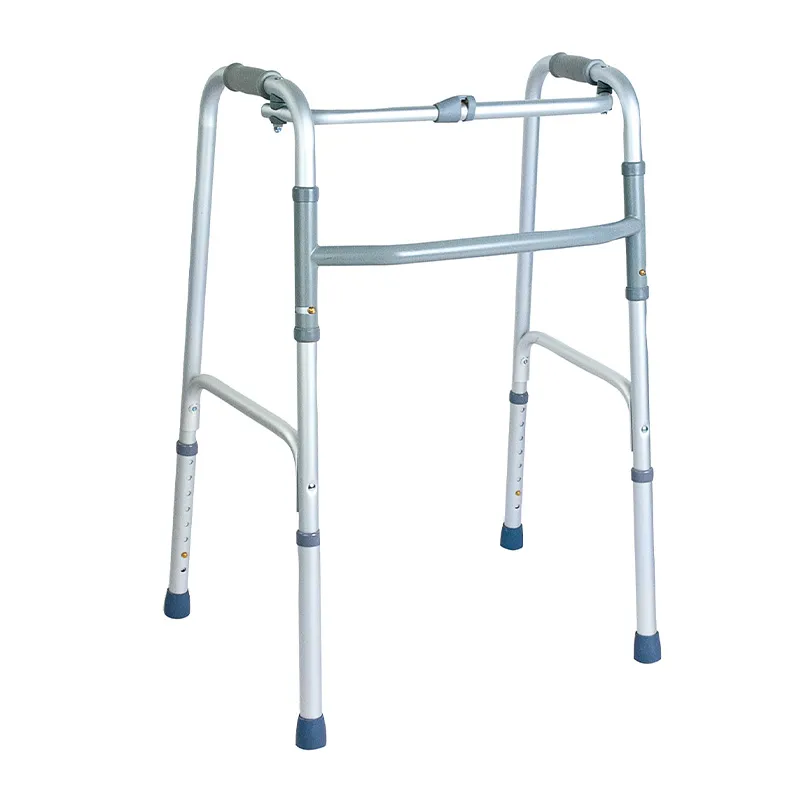
What is the difference between a rollator and a walker? Which is better?
2024-06-20 15:30
In the field of medical assistive devices, rollators and walkers are two common and important tools to help people with walking difficulties regain the ability to walk independently. There are obvious differences between these two devices in terms of function, design, applicable population and usage scenarios.
This article will analyze the difference between rollators and walkers in depth and explore which device is more suitable for specific populations and usage scenarios.
Basic definition of rollator and walker
What Is a Rollator?
A rollator, also known as a wheeled walker, is usually equipped with four wheels to provide stable support and a large range of motion. Rollators are designed with handbrakes, seats and storage baskets, etc., so that users can sit down and rest when they are tired, or carry items when they go out shopping.
Main features of rollators:
1. Four wheels: increase the stability and mobility of the device.
2. Handbrake and locking function: ensure that it can stay firmly when it needs to stop.
3. Seat and storage space: provide additional comfort and convenience.
4. Height adjustable: adapt to users of different heights.

What Is a Walker?
A walker is usually a frame without wheels, or a design with two front wheels and two rear foot pads, and the user needs to rely on their own strength to move the device. Walkers are suitable for users who need higher support and stability, especially those in the early stages of rehabilitation.
Main features of walkers:
1. Wheelless or two-wheel design: provides higher stability.
2. Lightweight and easy to carry: due to the simple structure and light weight, it is easy to carry and store.
3. Height adjustable: also suitable for users of different heights.
4. Wide application: from short-term rehabilitation to long-term use.

Differences in the functions and usage scenarios of walkers and walkers
Usage scenarios of walkers
Walkers are suitable for users who have some walking ability but need additional support and rest opportunities. Typical usage scenarios include:
1. Outing shopping: The storage basket and stability of the walker make it an ideal choice for outings.
2. Community activities: Users can use the walker at community activities, maintaining independence and taking a break at any time.
3. Walking in the park: The mobility and comfort of the walker are suitable for use in parks or other open spaces.
Usage scenarios of walkers
Walkers are suitable for users who need a high degree of stability and support, especially in the rehabilitation stage or when walking ability is weak. Typical usage scenarios include:
1. Indoor use: The lightness and simple design of walkers are very suitable for use in indoor environments such as home or hospital.
2. Rehabilitation training: Walkers provide necessary support and stability when doing rehabilitation training in rehabilitation centers or at home.
3. Short-distance walking: Walkers are ideal for users who need to stop and adjust frequently in short distances.
Comparison of the advantages and disadvantages of rollators and walkers
What are the advantages and disadvantages of rollators?
★ Pros of rollators:
High mobility: Rollators are equipped with wheels, which are easy to move and suitable for walking longer distances.
Versatility: Equipped with a seat and storage basket, it provides additional convenience and comfort.
High stability: The handbrake and locking function ensure that it can stay firmly when needed.
✱ Disadvantages of rollators:
Heavy and space-consuming: Due to the wheels and other accessories, rollators are usually heavy and not easy to carry and store.
Not suitable for users who are extremely dependent on support: For users with extremely weak walking ability or those in the early stages of rehabilitation, the support of a rollator may not be enough.

What are the advantages and disadvantages of a walker?
★ Walker advantages:
Lightweight and easy to carry: Simple structure, light weight, easy to carry and store.
Highly stable: Provides good support and stability, suitable for users in the early stages of rehabilitation or with weak walking ability.
Easy to operate: Simple design, users can easily operate and adjust.
✱ Walker disadvantages:
Poor mobility: The design without wheels or only two wheels limits mobility and is not suitable for long-distance walking.
Single function: Lack of seats and storage functions, limited range of use.

Which is better, a rollator or a walker?
When choosing between a rollator and a walker, considering the following factors can help make a more appropriate decision:
1. The user's walking ability
If the user has a certain walking ability and can control the device by himself, a rollator may be a better choice. A rollator provides more mobility and comfort, suitable for users who need to walk longer distances or go out for activities.
On the contrary, if the user's walking ability is weak, especially in the early stage of rehabilitation, and a high degree of support and stability is required, a walker is more suitable. The walker provides stronger support and stability, helping the user to gradually recover the ability to walk.
2. Use environment
The use environment is also an important factor in the choice. If it is mainly used indoors, the lightness and simple design of the walker are more suitable. If it needs to be used outdoors, especially if it needs to carry items or needs to rest during walking, the versatility of the rollator can better meet the needs.
3. The user's physical condition
The walker requires the user to provide more propulsion. If the user is weak or lacks upper limb strength, the wheels and handbrake function of the rollator can reduce the difficulty of operation.
4. Budget considerations
Generally speaking, the price of a rollator is higher, while the walker is relatively cheap. Choosing the right equipment according to the family's economic situation is also an important factor to consider.
Conclusion
Rodders and walkers each have their own characteristics and applicable scenarios. Rollators are suitable for users who have a certain walking ability and need to be active outdoors, providing more mobility and functions. Walkers are suitable for users with weak walking ability or in the rehabilitation stage, providing a high degree of support and stability.
When choosing, it is necessary to make the most suitable choice based on the specific situation of the user, including walking ability, use environment, physical condition and budget. By choosing a walking aid device reasonably, the user's independence and quality of life can be significantly improved.
I hope that the analysis and suggestions in this article can provide valuable reference for families who need to choose a walking aid device.








